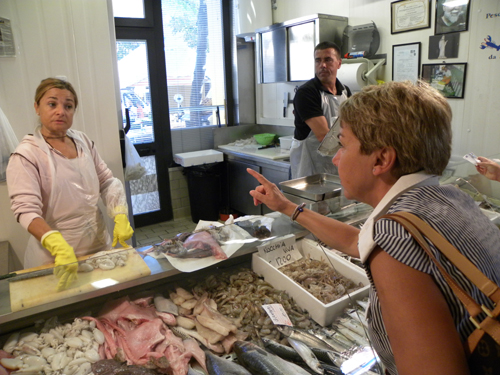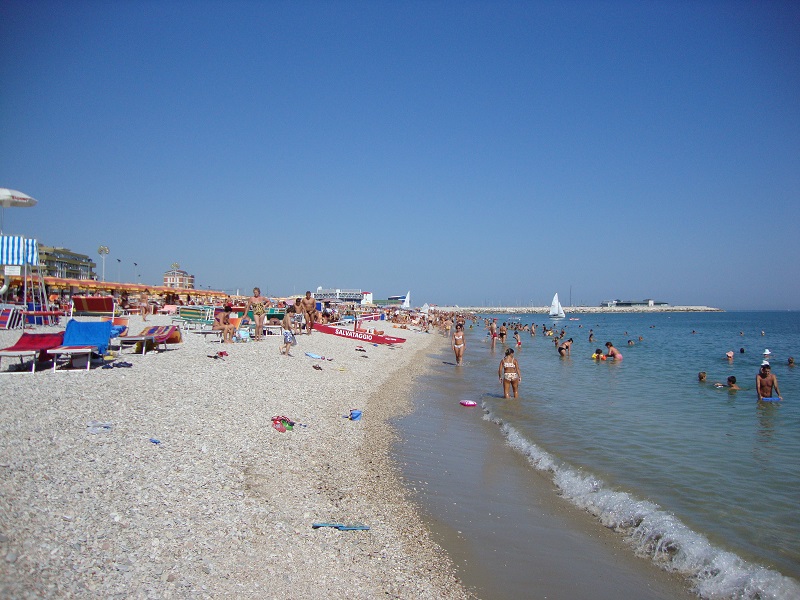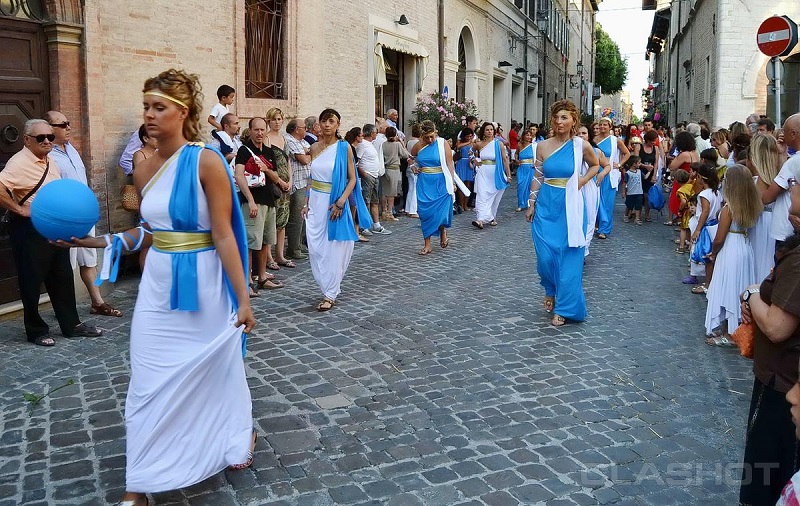FANO
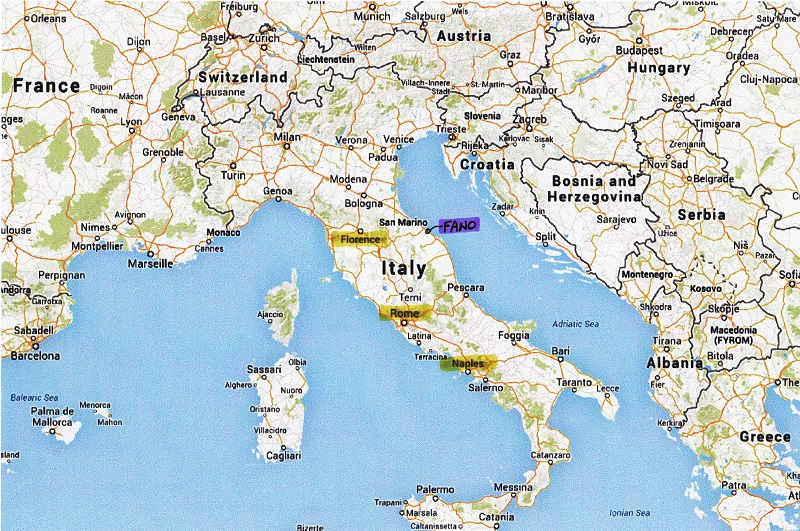
Fano is on the northeastern coast of Italy. It's a seacoast town, on the Adriatic Sea, about 150 miles east of Florence, and about 300 miles north of Naples. More specifically, it is a comune (town) of the province of Pesaro and Urbino in the Marche region of Italy. It is a beach resort, located where the Via Flaminia river reaches the Adriatic Sea. In ancient times, it was known as Fanum Fortunae after a temple of the Roman goddess, Fortuna, located there. Its first mention in history is in 49 BC, when Julius Caesar captured and held it during the Roman Civil War. Several years later, the Roman Emperor Augustus established an outpost there and built a wall, some parts of which remain today. In 2 AD, Augustus also built an arch (which is still standing) at the entrance to the town.
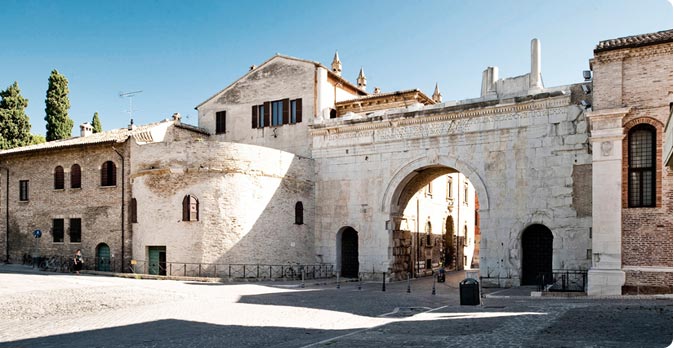
In January 271, the Roman Army defeated an invading group of Germanic tribes called the Alamanni in the Battle of Fano that took place on the banks of the Metauro River just inland of Fano.
Fano was destroyed by Gothic invaders in AD 538. It was rebuilt years later by the Byzantines.
During the Napoleonic Wars (1802-1815) it suffered heavy destruction. In World War I, Fano was bombed several times by the Austro-Hungarian Navy. During World War II it was massively bombed by Allied airplanes trying to hit the strategic railway and street bridges crossing the Metauro river, also suffering the destruction of all its bell towers by the Nazi occupation troops when they withdrew.
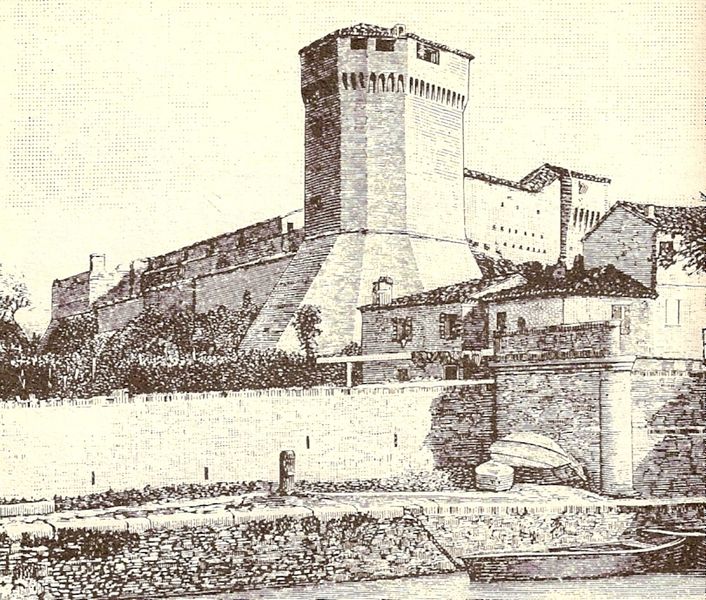
From RoughGuides.com: Today, Fano is the home of 64,000 people called fanesi. It is no longer quite the haven it was when Robert Browning washed up here in 1848, seeking respite from the heat and crowds of Florence. A large swathe of the seafront is dominated by an ugly industrial port, and although its beaches remain splendid, they now attract thousands of package tourists every year. Nevertheless, Fano is a pleasant enough place if a little humdrum, and comfortably combines its role as resort with that of small fishing port and minor historical town, the latter well worth the effort of leaving sand and sizzle for half a day’s wander.
The railway cleanly splits the old town from the modern resort that has grown up along two stretches of fine beach. To the southeast runs the Spiaggia Sassonia, a long strand of pebbly beach with a wide promenade. To the northwest runs the shorter Spiaggia Lido, all sand and serried rows of beach umbrellas - the livelier of the two.
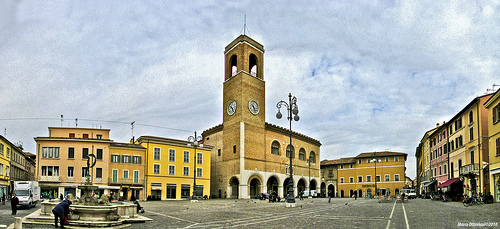
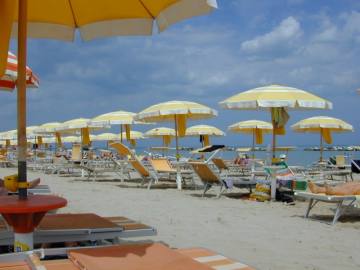
Between the two beaches lies the small fishing harbour where you can buy the best from the freshly-landed catch - the vongole or baby clams are particularly good. Both north and south of Fano run pleasant enough beaches, often relatively uncrowded and with decent stretches of public sands where you don't have to pay.
